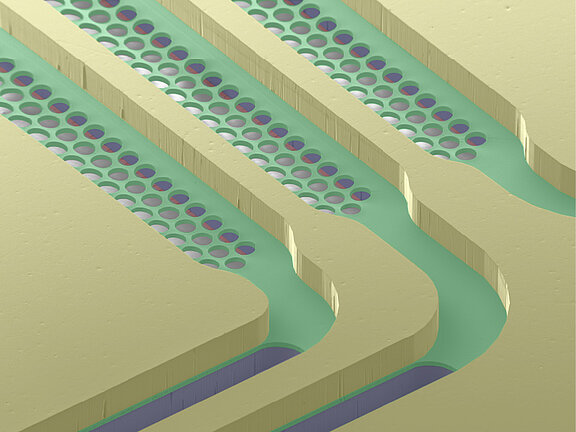
Microfluidic Systems

Next Generation Cellular and Organotypic Assays
Microfluidic systems use tiny channels, reservoirs, valves, and sensors to control fluids in confined spaces. Microfluidic technologies have emerged as key tools for precise fluid manipulation and offer a wide range of application possibilities. When combined with electrochemical sensors, the clarity and depth of insight into the systems under study is dramatically enhanced.
This synergy not only paves the way for scalability and parallelization, but also ushers in a new era of instrumentation with higher throughput, lower cost, and the ability to address more complex and specific questions.
Our research focuses on merging electrochemical sensing with microfluidics to address challenges in a variety of areas. This ranges from incorporating electrophysiological measurements into microfluidic systems to creating microfluidic designs tailored for both solid-state and biological nanopores. Our primary focus is on advancing microfluidics that enhance measurement systems while minimizing any adverse effects of integration on sensor performance.
We develop advanced fabrication methods using heterogeneous substrates such as glass, silicon, and polymers that are integrated with the specified electrochemical sensors. In parallel, we develop chip-to-world interfaces to ensure optimal connectivity between our fabricated devices and the corresponding measurement equipment.
Equipment
- Spin coater (SÜSS Mikrotek)
- Dip coater
- Mask aligner (SÜSS Mikrotek)
- Profilometer (Bruker)
- Laser scanning microscope (Keyence)
- Scanning electron microscope (Zeiss)
- Microfluidic pressure pump (Fluigent)
- Diebonder (finetech)
- Potentiostat (Gamry, AMTEK, Biologic)
- Patch-clamp Amplifier (Axon)
Projects
TechPat nano- Translational platform for nanosensor-based medical diagnostics
nanoDiag - This cluster uses nanopore technologies to detect epigenetic factors influencing diseases





